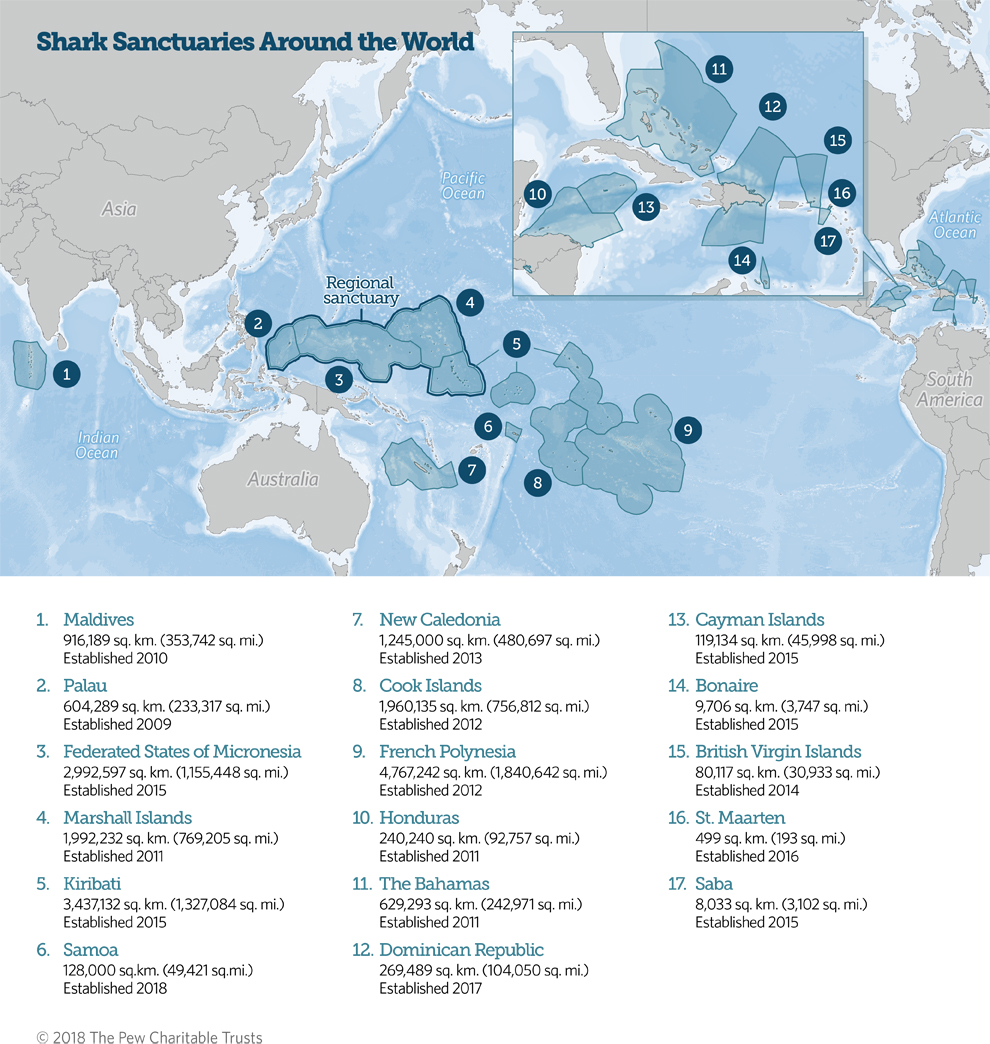Mapping Shark Sanctuaries Around the World
This map was updated in March 2018 to reflect newly established sanctuaries.
Shark sanctuaries are useful tools for coastal and island governments seeking to reduce shark mortality in their waters. At least 100 million sharks are killed in commercial fisheries every year. Sanctuary designations typically prohibit the commercial fishing of all sharks, the retention of sharks caught as bycatch, and the possession, trade, and sale of sharks and shark products within a country’s full exclusive economic zone (EEZ). Some also ban fishing gear typically used to target sharks, such as wire leaders and shark lines. Because of the role that sharks play in maintaining ocean health, protecting them with sanctuaries provides ecosystem, environmental, cultural, and economic benefits.







